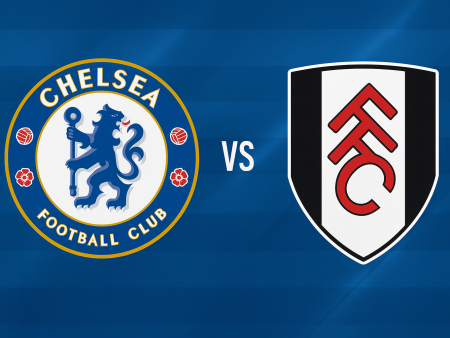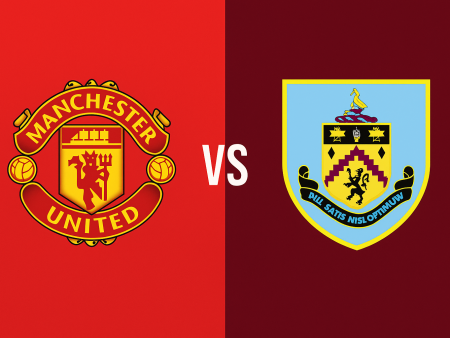Inside Graham Potter’s Tactical Revolution at Brighton & Hove Albion
Brighton & Hove Albion under Graham Potter have emerged as one of the Premier League’s most tactically flexible and unpredictable teams. While many managers hesitate to rotate their systems for fear of instability, Potter’s Brighton thrives on constant change—regularly shifting formations and lineups with confident results. Despite this fluidity, the Seagulls have maintained impressive possession statistics and a robust defensive record, earning praise for both their adaptability and effectiveness. This analysis explores the tactical evolution spearheaded by Potter during the 2021-22 campaign.
Formation Flexibility and Adaptive Strategies
A major hallmark of Potter’s Brighton is their capacity to seamlessly switch between different formations and personnel. The squad’s tactical intelligence allows them to move from systems like the 3-4-2-1 or the 3-5-2 to entirely different set-ups from one fixture to the next—a rarity among top European sides. This flexibility means Brighton’s opponents struggle to predict or counteract their game plan, providing the Seagulls a crucial advantage.
Player versatility is at the core of this approach. Except for goalkeeper Robert Sánchez, each player is proficient in multiple positions and roles. For example, Lewis Dunk, previously a mainstay as central defender, has featured more on the left of a back three to accommodate partners like Shane Duffy and Adam Webster. On the wings, the arrival of Marc Cucurella has allowed Dan Burn to also play more centrally, while Cucurella himself stands out for both his defensive acumen and attacking contributions along the left flank.
On the right, the choice between the speedy Tariq Lamptey and the defensively sturdy Joel Veltman offers options that suit both offensive and defensive duties. Versatile Solly March can operate on either side, even pushing Cucurella into central defense or midfield when needed. Central midfield is another position of abundance, where Potter can choose from clever distributors like Adam Lallana and Pascal Groß, dynamic runners such as Jakub Moder and Enock Mwepu, the relentless Yves Bissouma, and creative Alexis Mac Allister.
Up front, consistency is found in the pressing qualities of Neil Maupay and Leandro Trossard, with Danny Welbeck offering a direct goal threat and multiple other squad members able to play advanced roles depending on the tactical requirements.
Formation Adaptations: Tactical Examples
Brighton’s flexible structures go beyond theory—Potter’s adaptability is regularly tested and proven in competition. An illustrative example comes from late December 2021. Against Brentford, rather than simply mirroring their opponent’s formation, Potter deployed a 4-4-2 diamond, creating midfield superiority while maintaining sufficient defensive coverage out wide. This new approach delivered a 2-0 victory, striking a balance between nullifying Brentford’s strengths and exploiting spaces in their setup.
Just days later versus Chelsea, Brighton reverted to a 3-4-2-1 to match the Blues’ potent system, maintaining over half of the match possession—a feat rarely achieved against Chelsea on their home turf. In these matches, Brighton displayed the ability to morph defensively into 3-5-1-1 or 3-5-2 structures, stemming attacks through the middle and regaining control in dangerous areas.
Possession and Build-Up: The Engine Behind Brighton’s Game
A key element of Brighton’s tactical identity under Potter is their dedication to controlled possession and progressive build-up. This season, they ranked fourth in the league for passes completed per game, trailing only perennial title contenders. Yet, Brighton distinguish themselves by the frequency and success of both their direct long balls and their intricate passing sequences.
Defenders such as Adam Webster possess the vision and range to deliver incisive passes into the final third, initiating attacks when opportunities present themselves. Meanwhile, Dunk and Duffy are adept at circulating the ball and completing long balls at high accuracy.
Whether operating in a back four or back three, Brighton’s wide defenders or wing-backs maintain high positions to stretch the opposition. Goalkeeper Robert Sánchez often assumes a proactive role, acting as an extra outfield player during build-up to establish numerical superiority and aid progression from deep areas.
Adam Lallana, frequently deploying as a deep-lying playmaker, orchestrates from central areas, forming a diamond in build-up and ensuring the team’s structure remains compact and fluid. The primary aim is to create optimal passing angles and facilitate forward thrusts to link with attacking players like Trossard and Maupay, who regularly drop deep to support progression before exploiting space in advanced positions.
Positional play is a constant theme: players such as Cucurella and March will adjust their roles based on teammates’ movement and opposition shape, constantly creating overloads and avenues for progress. This commitment to ball retention and dynamic off-ball movement sustains Brighton’s high possession metrics but demands improvement in end product.
Attacking Approach: Strengths and Shortcomings
While Brighton’s possession style allows them to dominate games and create multiple shooting opportunities, their finishing remains a chief area for development. By the halfway stage of the 2021-22 season, Brighton had scored only 17 goals in 18 league matches, highlighting difficulties converting their positive play into goals.
In attack, Brighton typically organize in shapes like 3-2-5 or 2-3-5, providing both width and central overloads. Lallana is often the pivot, while Bissouma holds a deeper role to ensure defensive stability during attacking sequences. Advanced play frequently focuses on left-sided overloads, leveraging the chemistry between Cucurella and Trossard, both leaders in attacking touches and final-third carries.
Brighton strive to create 2v1s or 3v2s in the wide areas, with wing-backs, midfielders, and forwards combining to break opposition pressure. Notably, over 40% of the team’s shots have come from outside the box, with only a small fraction taken within the six-yard area—indicating a preference or necessity for long-range efforts over classic poacher goals.
Improvements in transition speed could benefit Brighton, as periods of patient possession and frequent dribbling sometimes slow their counter-attacks. Harnessing width and pace, especially through Lamptey or quick switches of play, could generate higher quality chances and help translate dominance into goals.
Defensive Organization and Pressing Tactics
Brighton’s robust defense is a cornerstone of their tactical system, compensating for inconsistencies in attack. Potter’s side is comfortable alternating between a compact low to mid-block and coordinated high pressing, depending on the game plan and specific opposition threats.
In defensive phases, Brighton alternate between 4-4-2/4-4-1-1 when fielding a back four, and 5-4-1, 5-3-2, or similar variations with three central defenders. Regardless of setup, the team prioritizes minimal distances between lines and collective shifting, making it difficult for opponents to create central or wide breakthroughs.
Aerial prowess is a standout defensive asset, with the team among the league leaders in tackles per game, total defensive blocks, and success in aerial duels. Yves Bissouma’s ability to break up play and Robert Sánchez’s decisive goalkeeping have been instrumental to Brighton conceding just 18 goals in as many games—a top-five record at the midway point.
Pressing higher up the pitch, Brighton are systematic and effective. Maupay, Trossard, and other forward players initiate the press, often forcing opponents into long clearances that Brighton consistently reclaim. In these moments, the defensive line typically holds deeper positions to prevent being bypassed by long balls, an adaptation that has both benefits (preventing quick over-the-top counters) and some inherent risks (potential gaps between the pressing forwards and the defensive line).
Summary: Tactical Innovation with Scope for Growth
Brighton’s tactical flexibility and well-drilled defensive structure make them one of the league’s most intriguing sides under Graham Potter. Their adaptability, versatile squad, and advanced possession-based play have delivered consistent top-half performances, even as attacking productivity lags behind their creative potential. With modest improvements in transition play and finishing, Brighton could legitimately push for a European spot, especially if their attacking partnerships start firing in the second half of the season.
Potter’s innovative, detail-oriented approach is not only keeping Brighton comfortably in the Premier League top ten but also ensuring they play some of England’s most attractive and intellectually demanding football—laying foundations for sustained progress and possibly greater ambitions ahead.









